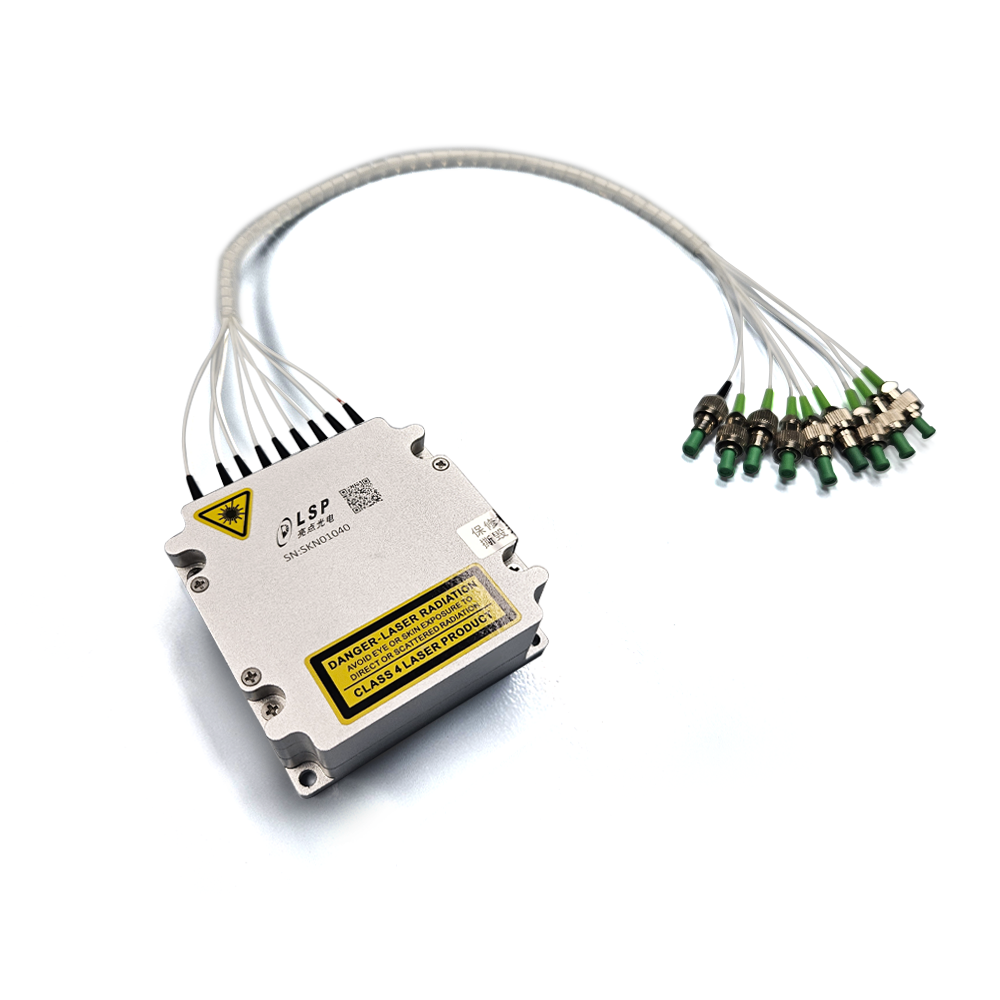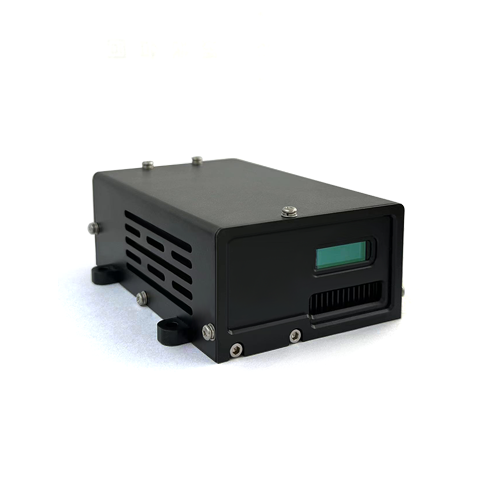1.06um Fiber Laser
The 1064nm Wavelength Nanosecond Pulse Fiber Laser is a precision-engineered tool ideal for LiDAR systems and OTDR applications. It features a controllable peak power range from 0 to 100 watts, ensuring adaptability across various operational contexts. The laser's adjustable repetition rate enhances its suitability for Time-of-Flight LIDAR detection, promoting both accuracy and efficiency in specialized tasks. Additionally, its low power consumption underscores the product's commitment to cost-effective and environmentally conscious operation. This combination of precise power control, flexible repetition rate, and energy efficiency makes it an invaluable asset in professional environments requiring high-level optical performance.
Diode Laser
Laser diodes, often abbreviated as LD, are characterized by high efficiency, small size and long life. Since LD can produce light with identical properties such as wavelength and phase, high coherence is its most important feature. Main technical parameters: wavelength, lth, operating current, operating voltage, light output power, divergence angle, etc.
-

525nm Green Laser
-

CW DIODE PUMP MODULE (Nd:YAG)
-

CW DIODE PUMP MODULE (DPSSL)
-

QCW DIODE PUMP MODULE (DPSSL)
-

300W 808nm QCW HIGH POWER DIODE LASER BAR
-

QCW FAC (Fast Axis Collimation) STACKS
-

P8 SINGLE EMITTER LASER
-

C2 STAGE FIBER COUPLED DIODE LASER
-

C3 STAGE FIBER COUPLED DIODE LASER
-

C6 STAGE FIBER COUPLED DIODE LASER
-

C18-C28 STAGE FIBER COUPLED DIODE LASER
-

QCW ANNULAR STACKS
-

QCW VERTICAL STACKS
-

QCW MINI STACKS
-

QCW ARC-SHAPED STACKS
-

QCW HORIZONTAL STACKS
FOG
Our Advanced Optical Solutions -FOGs category features Optical Fiber Coils and ASE Light Sources, essential for Fiber Optic Gyros and photonic systems. The Optical Fiber Coils use the Sagnac Effect for precise rotational measurement, crucial in inertial navigation and stabilization applications. The ASE Light Sources provide a stable, broad-spectrum light, key for high-coherence requirements in gyroscopic systems and sensing equipment. Together, these components offer reliable and accurate performance in demanding technological applications, from aerospace to geological surveying.
ASE Light Source Application:
· Providing Broad-Spectrum Light: Essential for minimizing effects like Rayleigh backscattering, enhancing gyro accuracy.
· Improving Interference Patterns: Critical for precise rotational measurement.
· Enhancing Sensitivity and Precision: Stable light output allows for accurate detection of minute rotational changes.
· Reducing Coherence-Related Noise: Short coherence length minimizes interference errors.
· Maintaining Performance in Varied Temperatures: Suitable for fluctuating environmental conditions.
· Ensuring Reliability in Harsh Environments: Robustness makes them ideal for challenging aerospace and marine applications.
Optical Fiber Coil Application:
· Utilizing the Sagnac Effect: They detect rotational movement by measuring the phase shift in light caused by rotation.
· Enhancing Gyro Sensitivity: The coil design maximizes the gyro's responsiveness to rotational changes.
· Improving Measurement Accuracy: High-quality coils ensure precise and reliable rotational data.
· Reducing External Interference: The coils are designed to minimize the impact of external factors like temperature and vibrations.
· Enabling Versatile Applications: Essential for various uses, from aerospace navigation to geological surveying.
· Supporting Long-Term Reliability: Their durability makes them suitable for long-term use in demanding environments.
Laser Designator
Lidar
Rangefinder
Laser rangefinders operate on two key principles: the direct time-of-flight method and the phase shift method. The direct time-of-flight method involves emitting a laser pulse towards the target and measuring the time it takes for the reflected light to return. This straightforward approach delivers accurate distance measurements, with spatial resolution influenced by factors like pulse duration and detector speed.
On the other hand, the phase shift method utilizes high-frequency sinusoidal intensity modulation, offering an alternative measurement approach. While it introduces some measurement ambiguity, this method finds favor in handheld rangefinders for moderate distances.
These rangefinders boast advanced features, including variable magnification viewing devices and the capability to measure relative velocities. Some models even perform area and volume calculations and facilitate data storage and transmission, enhancing their versatility.
-

LST-LRE-23120
-

LST-LRE-19138
-

LST-LRE-1640
-

LST-LRE-1465
-
.png)
MICRO 3KM LASER RANGEFINDER MODULE
-

3~15KM LASER RANGEFINDER MODULE
-

F Series:3~15KM LRF MODULE
-

ERBIUM-DOPED GLASS LASER
-

1500M LASER RANGEFINDER MODULE
-

LS-WG600-M50
-

LS-MINI-P35
-

LS-MINI-RF35
-

LS-RXY400
-

LS-RXY500
-

LS-RXY600-35/54
-

LS-RXY600-B50
-

LS-RXY600-B50RF
-

LS-RXY600-M50
-

LS-RXY600-M50RF
-

LS-RXY720
-

LS-SG880
-

LS-WG600-B50
Thermal Imager
Vision
- Lens: Primarily used in illumination and inspection, crucial for ensuring train safety through precise control in the production process of railroad wheel pairs.
- Optical Module: Including single-line and multiline structured light source, and illumination laser systems. Employs machine vision for factory automation, simulating human vision for tasks like recognition, detection, measurement, and guidance.
- System: Comprehensive solutions offering diverse functions for industrial use, excelling in efficiency and cost-effectiveness over human inspection, providing quantifiable data for tasks including identification, detection, measurement, and guidance.
Application NOTE: Laser Inspection in Railway,logisctic package and road condition etc.





































.png)


















